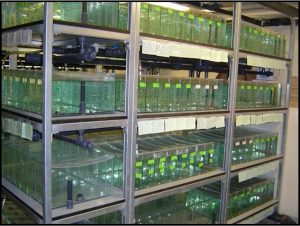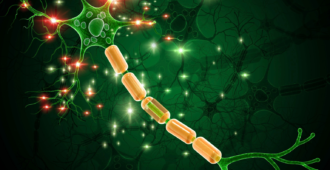Natalie Rounding is a first year PhD student funded by the MND Association. Based at the Sheffield Institute for Translational Neuroscience (SITraN), University of Sheffield, she gives us an insight into zebrafish and how they can be used in MND research.

My project focuses on making a zebrafish model of Motor Neurone Disease (MND). In the past, mice have been successfully used to study MND, however zebrafish also have many characteristics which make it an ideal organism to study this disease. One major advantage is that many MND-linked genes which have been identified in humans are also found in zebrafish. This is very useful for scientists, as it enables a deeper understanding of how different defects in these genes cause MND, which is important for future development of treatments for people living with MND.
My project started with ‘knocking out’ a MND-linked gene in the zebrafish, which means that now this particular gene does not function anymore. Following on from this step I have been going through each individual zebrafish and identifying those with the non-functional MND-linked gene. The next phase in my research will be to see if this non-functional gene causes the zebrafish to develop symptoms of MND and if so, I will go on to investigate how this happens and if there is a way to prevent it. Importantly, generation of this model will complement pre-existing mouse models of MND and help us to further understand why humans develop this devastating disease.





